Excerpts from Jim Conrad's
Naturalist Newsletter
Entry from field notes dated June 30, 2023, taken along small gravel road about half a km west, across valley, of El Suspiro about 1 straight-line km NW of El Doctor; in the mountains of east-central Querétaro state, municipality of Cadereyta de Montes, 12 straight-line kms due east of Vizarrón de Montes but much farther by twisting roads; elevation ~2600m (~8500 ft), Querétaro, MÉXICO, (N20.85563°, W99.58686°)
MEXICAN SAGE
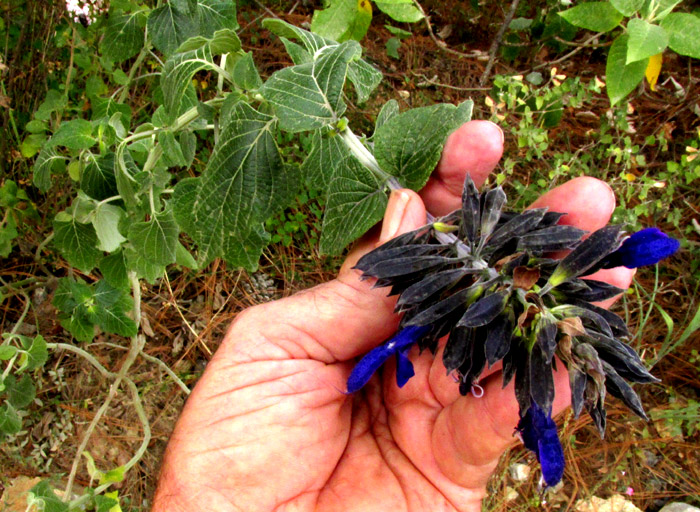
Along the road passing through pine/oak forest, the above knee-high wildflower's deep blue color exploded amid all the greenness. Despite the attractive blossoms, the plant was irregularly branched from the base, ungainly, and enmeshed with the weeds.

With the plant's leaves arising opposite one another on stems somewhat squared in cross-section, and the bilaterally symmetrical, strongly 2-lipped corollas, this just had to be a member of the Mint Family, the Lamiaceae.
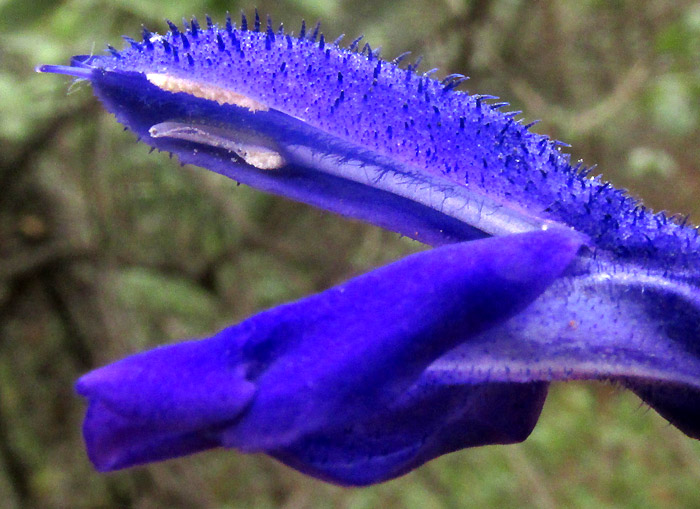
The corolla's top lip, but not its bottom, bristled with long, soft hairs. Close beneath the upper lip's concavity, two white stamens were producing pollen, while the stigmatic tip of the ovary's slender style just barely projected beyond the tip of the upper lip, ready to receive pollen atop hummingbird beaks. In short, here's yet another sage, genus Salvia, of which we've already encountered nine species here in Mexico. For the pleasure of exploring "variations on the sage motif," you might enjoy reviewing the species linked to in the Mint Family section of our Mexican wildflowers index page.
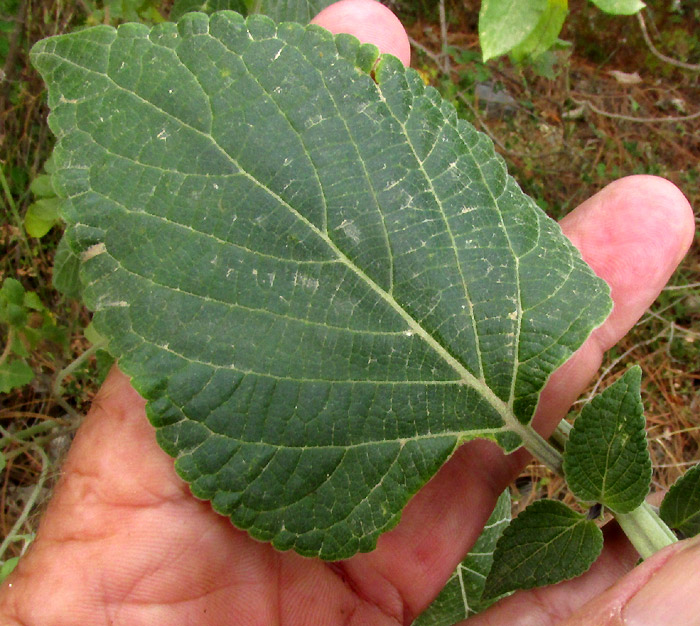
The leaves were oval and tended to be squared at the base, though sometimes they were almost rounded, or produced shallowly backward-directed basal lobes.

Leaf undersurfaces, petioles and stems were densely velvety-hairy. However, as seen above at the top-left where a leaf's dark green surface is viewed from the side, the leaf tops lacked such hairy covering.
Maybe 200m up the road, on a steep slope below a rock overhang, the following showed up with no flowers but with the previous season's dried-up raceme of calyxes from which the plant's nutlets already had fallen:
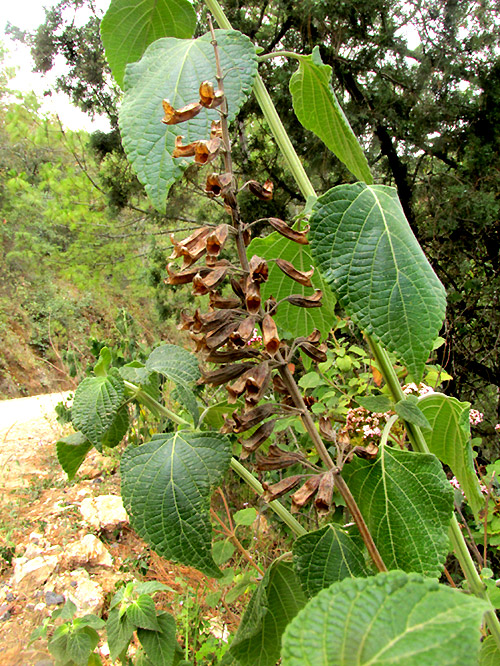
A close-up shows that the parts maintained their soft-hairiness:
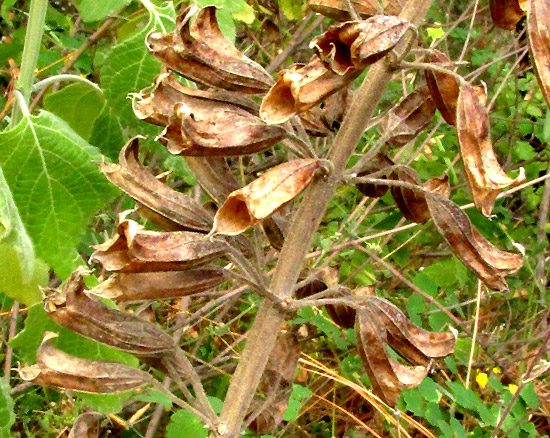
This sage's main field marks are its relatively large, blue flowers, the oval leaves' squarish-tending bases, the soft-hairy vegetative parts, and the nature of the tall, soft, often curving, thickish hairs atop the corolla's upper lip. All these features considered together lead us to SALVIA MEXICANA, the "real" Mexican Sage amid a rainbow-confusion of many Mexican sages.
Salvia mexicana is endemic just to the highlands of Mexico, from Chihuahua and northeastern Mexico south to Oaxaca. Two forms are recognized, and ours is the large-flowered one; the calyx in our second picture above was 17mm long. Both forms occur mainly in disturbed sites, so our roadside one probably felt at home.
Among gardeners worldwide this has been a favorite species for a long time. The name Salvia mexicana was first published by Linnaeus himself in 1753, in the great Species Plantarum, listing every species of plant in the world Linnaeus knew about at that time.
Over the centuries numerous named cultivars have been derived from Mexican Sage. There's 'Limelight' said to be the earliest of all winter-flowering salvias, and the smaller 'Limelight' Dwarf; also 'Lollie Jackson' liked for its compactness; 'Ocampo' growing upright to 2m (7ft); 'Queretaro' named after this state and described as a sage on steroids -- much larger and more vigorous than other cultivars; and other cultivars exist as well. If you do an image search on Salvia mexicana nearly all pictures will show cultivars in gardens and greenhouses, and they all carry genes from our awkward-growing Mexican plants with their surprisingly pretty blossoms.
Traditionally, in Mexico the species has been used mostly as a garden plant, but sometimes it's employed medicinally to treat bacterial infections and inflammations.